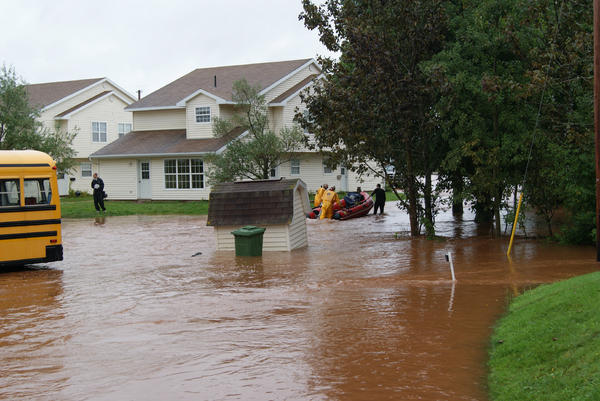Flooding is the most frequent natural disaster in Canada. Most Canadians know to avoid flooded roads and watch for overflowing waterways after heavy rainfall, but what if the flooding occurs in your own home?
Many neighbourhoods across Canada are regularly affected by flooding - just look at the flooding that occurred in Truro, Nova Scotia this week. In some areas of the Greater Toronto Area in Ontario, residents have spent countless nights clearing water from their basements following heavy rain. A city councillor reported clearing 45 centimeters of water following a storm in July, and cities across the country report similar or worse situations during storms with average amounts of rainfall reported.
 Photo credit: Weather Network/Marjorie Beckwith
Photo credit: Weather Network/Marjorie Beckwith
Since the flooding in Truro wasn't caused by pipe backup, most homeowners are not covered by their home insurance policies and are responsible for covering the cost of clean up themselves. The Red Cross has stepped in to provide cleanup aid in Truro by providing residential cleanup kits. While some Canadian cities offer subsidies to help residents prevent floods, the Canadian Red Cross is stepping in to offer their own flood preparedness tips.
Your flood response kit should include the following items:
· Camera or video camera: Your home insurance company will require detailed reports of the damage to your home. Take photo and video of any damage caused by flood water.
· Notebook and pen: While you may never forget the experience, you’ll want to take notes to record detailed notes on the damage.
· Buckets, mops, and sponges
· All-purpose cleaner or unscented detergent
· Large containers for soaking bedding and clothing
· Clothing lines to dry bedding and clothing
· First aid kit
· Tool kit (containing items like a hammer and pliers)
· Trash bags
· Drinking water: Following heavy flooding, water sources may become contaminated. The Red Cross recommends you have 4 litres of bottled water per person, per day.
Other helpful items include extension cords, submersible pumps, wet/dry vacuums, and dehumidifiers or heaters.
For more information on how to #beready for flooding emergencies, visit redcross.ca/prepare